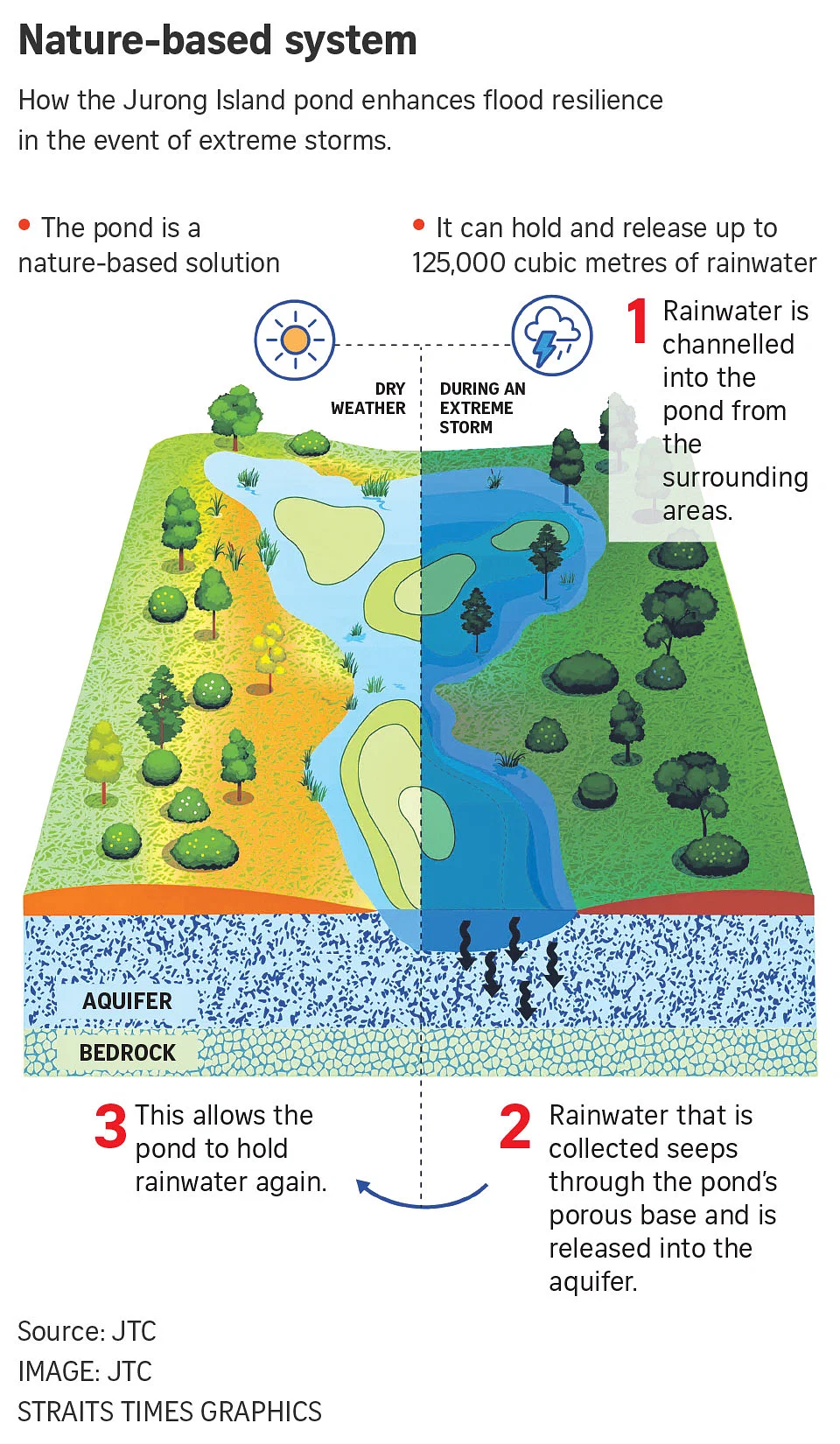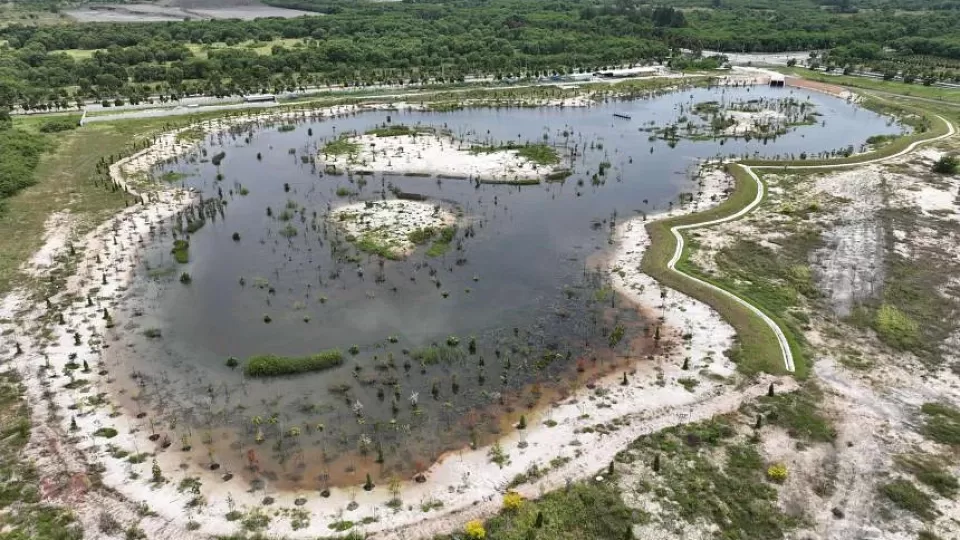December 13, 2022
SINGAPORE – JTC Corporation (JTC) has built a pond on Jurong Island that can hold enough rainwater to fill 50 Olympic-size swimming pools and makes use of the terrain to protect the area from climate-change-related flooding.
Built above an underground body of permeable sand, rainwater from an extreme storm event will be channelled into the 8.9ha pond, the first of such a size built in Singapore to address climate change.
This water will then seep through the pond’s porous base into an aquifer – a layer of permeable rock through which groundwater flows – before it gradually empties into the surrounding sea.
This will keep the pond viable as a flood protection measure without the need for pipes, pumps and mechanical drainage systems, said JTC chief sustainability officer Tan Chee Kiat.
He added: “The pond represents a first-of-its-kind, nature-based solution that uses Jurong Island’s unique sandy terrain to strengthen our climate change resilience.”
In 2020, JTC engineers embarked on a study to find innovative and sustainable adaptations to the drainage system on Jurong Island so that it can better cope with episodes of intense rainfall.
The team considered an aquifer that was found to have formed naturally on the island over time as rainwater is accumulated within the reclaimed sand layers.
The JTC engineers found that they could build a retention pond above the aquifer to hold and release rainwater naturally to prevent flooding without massive upgrades to Jurong Island’s drainage infrastructure.
Mr Tan said that as a nature-based solution that can avoid the environmental costs related to intensive construction, this pond supports the transformation of Jurong Island into a sustainable energy and chemicals park as part of the Singapore Green Plan 2030.
Assistant landscape architect Raymond Yong from Dreiseitlconsulting, the firm involved in the design of the flood control pond, said that the pond can perform other important environmental functions – such as minimising evaporation for groundwater and promoting biodiversity.
Citing a similar project done to convert the canal running through Bishan-Ang Mo Kio Park into a wider, natural stream, Mr Yong said: “Designing the pond this way, capturing and storing water in the pond will help mitigate flooding, promote percolation and groundwater recharging and reduce environmental temperature.
“Additionally, it can become a habitat for migratory birds either to feed or rest.”
This pond will allow us to put the environment of industrial landscapes to better use, said Mr Yong.


